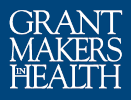Promoting Family-Centered Care for Children with Special Health Care Needs
There are approximately 10.2 million children in the United States with special health care needs, which translates into one out of every five households (MCHB 2007).
Access to Care for the Categorically Ineligible
Although the Affordable Care Act (ACA) will expand health care coverage to 32 million Americans (CBO 2010), many states remain concerned about providing their residents access to clinical and preventive services.
Educating Californians about the Affordable Care Act
he California Endowment launched a consumer education effort aimed at explaining the contents of the Affordable Care Act for one simple reason: our organization’s mission is “to expand access to affordable, quality health care for underserved individuals and communities, and to promote fundamental improvements in the health status of all Californians.”
Giving Voice: The Power of Grassroots Advocacy in Shaping Public Policy
Within advocacy work, there exists a wide spectrum of strategies that can be employed to change or shape public policy. Yet, too often, nonprofit health organizations tend to limit themselves to a narrow range of strategies that typically includes education, policy/data analysis, and limited legislative advocacy. While these strategies are important to public policy work, they may not be enough to influence policymakers in today’s increasingly special interest and ideological-driven political system.
The Role of Philanthropy in Implementing Federal Health Reform
In March 2010 President Obama signed both the Patient Protection and Affordable Care Act and the Health Care and Education Reconciliation Act into law. These two laws will dramatically affect the health insurance system and the delivery of care in America.
Paving the Way for Change: Implementing CLASS
The historic passage of the 2010 Patient Protection and Affordable Care Act was in many ways a homerun for health advocates who have been working toward meaningful reform for decades. The new law lays the groundwork for sweeping changes in the American health care system, expanding access, coverage, and personal responsibility for care suited to individual needs.
Lights, Camera, Take Action: Spotlighting Public Health for the Next Generation
What do zombies, “Salad Man,” and Academy Award-nominated director Gus Van Sant have in common? They have all played a role in Northwest Health Foundation’s efforts to bring the importance of a fully functioning public health system into the hearts and minds of the people – especially the youth – of Oregon.
Prison Diversion Programs: Compelling Social Investments for Foundations
As a relatively small, regional niche foundation, Staunton Farm Foundation reasoned that “improving behavioral health” was too broad an area for us to make a significant impact. Hence, the foundation chose to focus on criminal justice.

